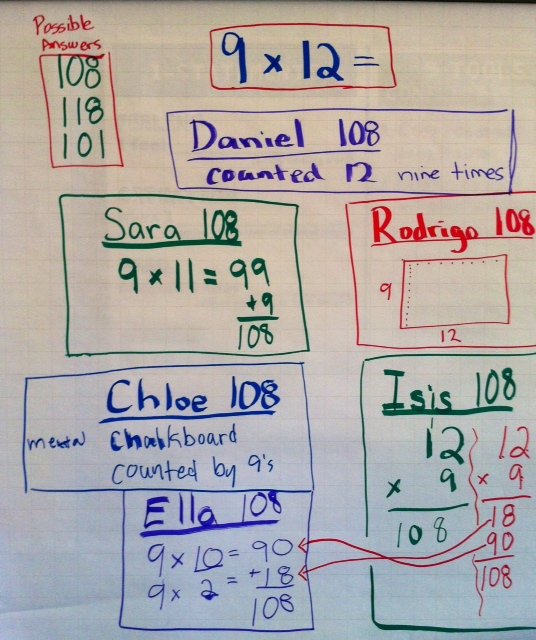Introduction

Math Talks are a signature strategy for implementation of the SFUSD Math Core Curriculum. Math Talks are a powerful teaching tool. They are a teacher-led student-centered technique for building math thinking and discourse.
Math Talks can be centered around any math topic. However, they are not used to introduce Math Content. Rather, they are best when the content is generally familiar to students up to their Zone of Proximal Development. They serve to further understanding of Math Content while addressing Math Practice Standard #3: Construct viable arguments and critique the reasoning of others.
A more detailed description of Math Talks can be found in the SFUSD Math Teaching Toolkit.

Classroom Principles for Math Talks
- Teachers deliberately set up a safe environment where each child’s thinking is valued
- Students practice making their thinking explicit
- Everyone practices understanding each others' thinking
The Process
Math talks usually last about 10 minutes and may be conducted 2 to 3 times per week.
- Teacher presents the problem.
- A problem is presented to the whole class or a small group. Computation problems are always presented horizontally, so as to discourage fixation on the standard algorithm.
- Students figure out the answer.
- Students are given time (1–2 minutes) to silently and mentally figure out the answer. They signal quietly to the teacher (e.g. with a thumb up against their chest) when they have an answer.
- Students share their answers.
- A few students volunteer to share their answers and the teacher records them on the board. The teacher records all answers that students arrived at without judgement.
- Students share their thinking.
- Students share how they got their answers with a partner and/or with the larger group. The teacher records the student's thinking and attaches their name to the solution. As the students are sharing their thinking, the teacher asks questions that help them express themselves, understand each other, and clarify their thinking to make sense of the problem and its solution(s). Multiple ways of solving problems and the connections among them are emphasized.
Questions that promote Mathematical Discourse during Math Talks
Probing questions (help students express their thinking)
- Can you tell us where you got that?
- How did you figure that out?
- What was the first thing your eyes saw, or your brain did?
Connecting questions (help students respond to each other’s thinking)
- Who did it another way?
- What questions do you have for them?
- Do you agree or disagree? Why?
This page was last updated on June 21, 2023

